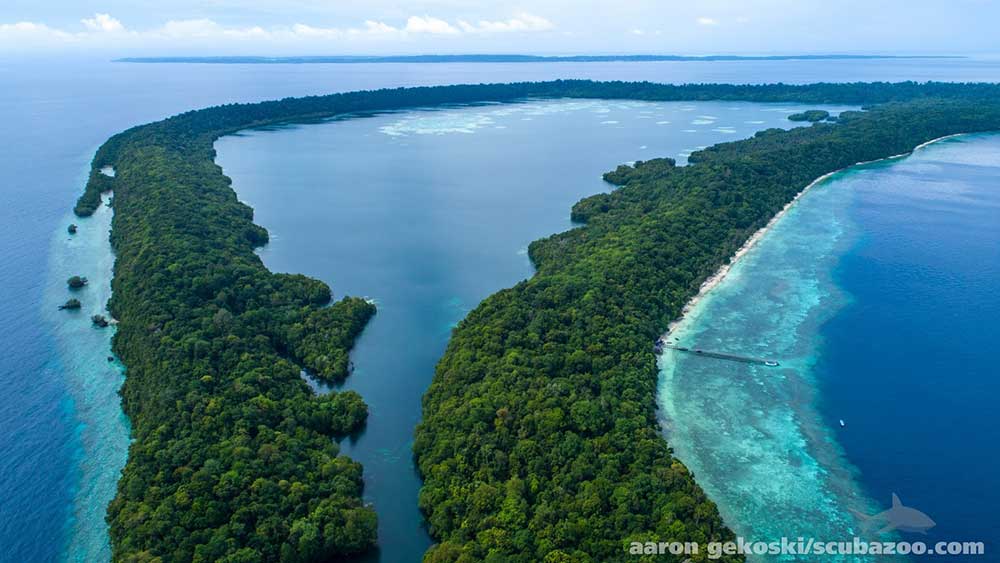image credits: Aaron Gekoski
The unique jellyfish of Lake Kabakan
The jellyfish of the Kakaban saltwater lake, located in a remote and
uninhabited region of the island of Borneo, have a peculiarity: they have lost
stinging power in a habitat without predatory species.
Many curious people come every day to the island of Kakaban, located at
about 1,500 kilometers from Jakarta, the capital of Indonesia, to see up close or
cautiously touch these non-poisonous jellyfish. Bathers swim and
dive among them, catching them with their hands to check their harmlessness.
More than two million years ago, this place was an atoll with an internal
lagoon that communicated with the sea, but over thousands of years the rocks
that formed it emerged and the lake became isolated. Over time,
the tentacles of these jellyfish lost their stinging cells until
their toxicity has become imperceptible to humans.
A predator-free environment
The lack of communication with the sea prevents any large marine animal
from entering the lake and becoming the king of its current inhabitants:
small fish, anemones, sponges, sea snakes and the jellyfish
that have made it famous.
The mutation of these jellyfish has been favored by the natural evolution of the
ecosystem, not having to fear any large predator, they did not need
to sting to protect themselves".
The dense mangroves and steep limestone cliffs of the
wild island of Kakaban, which in the local dialect under means embrace, surround the
lake, which has a maximum depth of 18 meters and whose surface
reaches five square kilometers. In its interior inhabit thousands of
jellyfish of between 10 and 30 centimeters in length that form a mosaic
that combines the green of the waters and the pinkish of the sponges and corals with
the orange and white of the aquamarines.
"Kakaban is a unique heritage that must be preserved"
Unfortunately, it is becoming more and more known by tourists and its situation
is deteriorating. Environmentalist associations warn that
tourism can be a double-edged sword and have asked the local government to
limit the number of visitors who can access the lake. In fact, at the beginning
of the new century, the island faced one of its most critical moments when
some tourists introduced hawksbill turtles into the lagoon, which
was on the verge of causing the disappearance of the jellyfish, as they are part of
the diet of the chelonians.
Among the unique precautions that visitors to Kakaban have to
take are: do not swim in the sea before entering the lake, avoid
sunscreen to avoid polluting its waters and do not take any jellyfish, a
common delicacy in Indonesia.
Efe Dewi Satriani, Indonesian expert of the environmental association World Wildlife Fund
.

